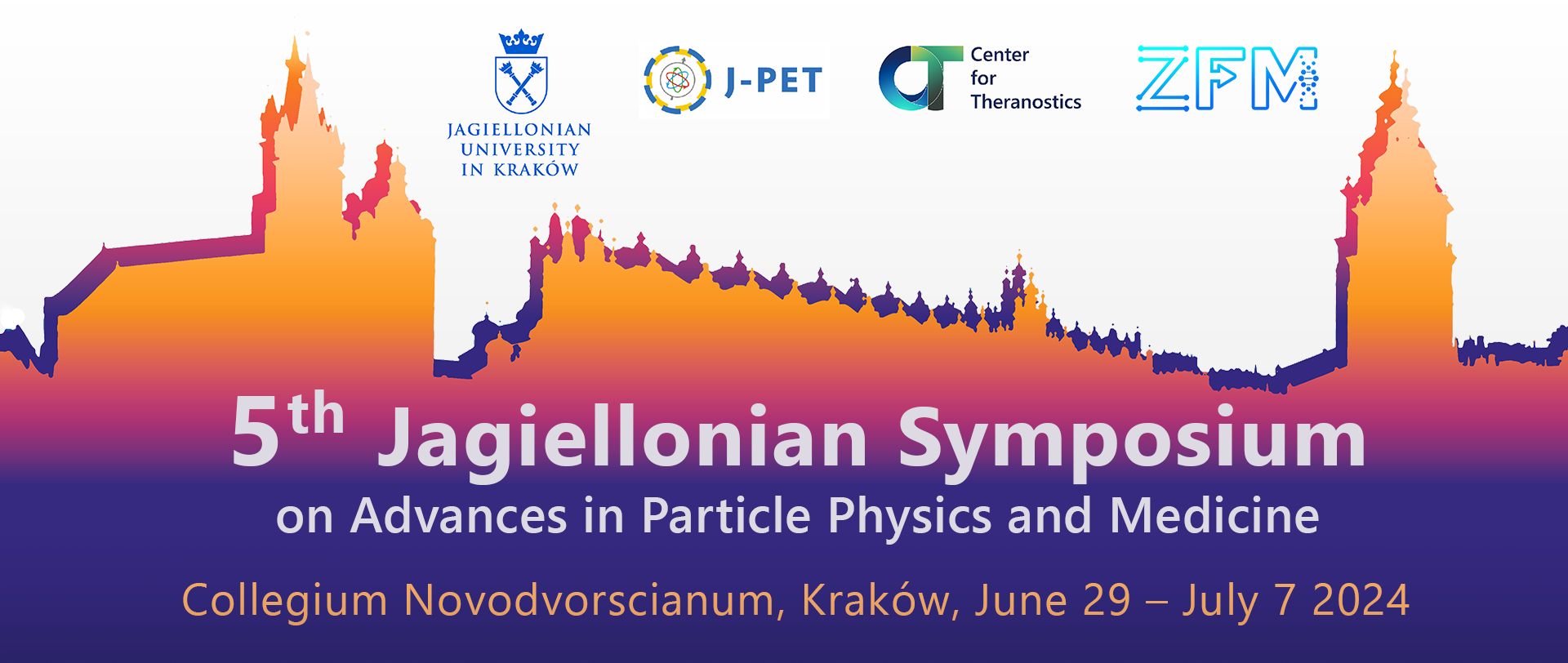The list of keynote speakers (in alphabetical order) is constantly updated.
--------------------------------------------------
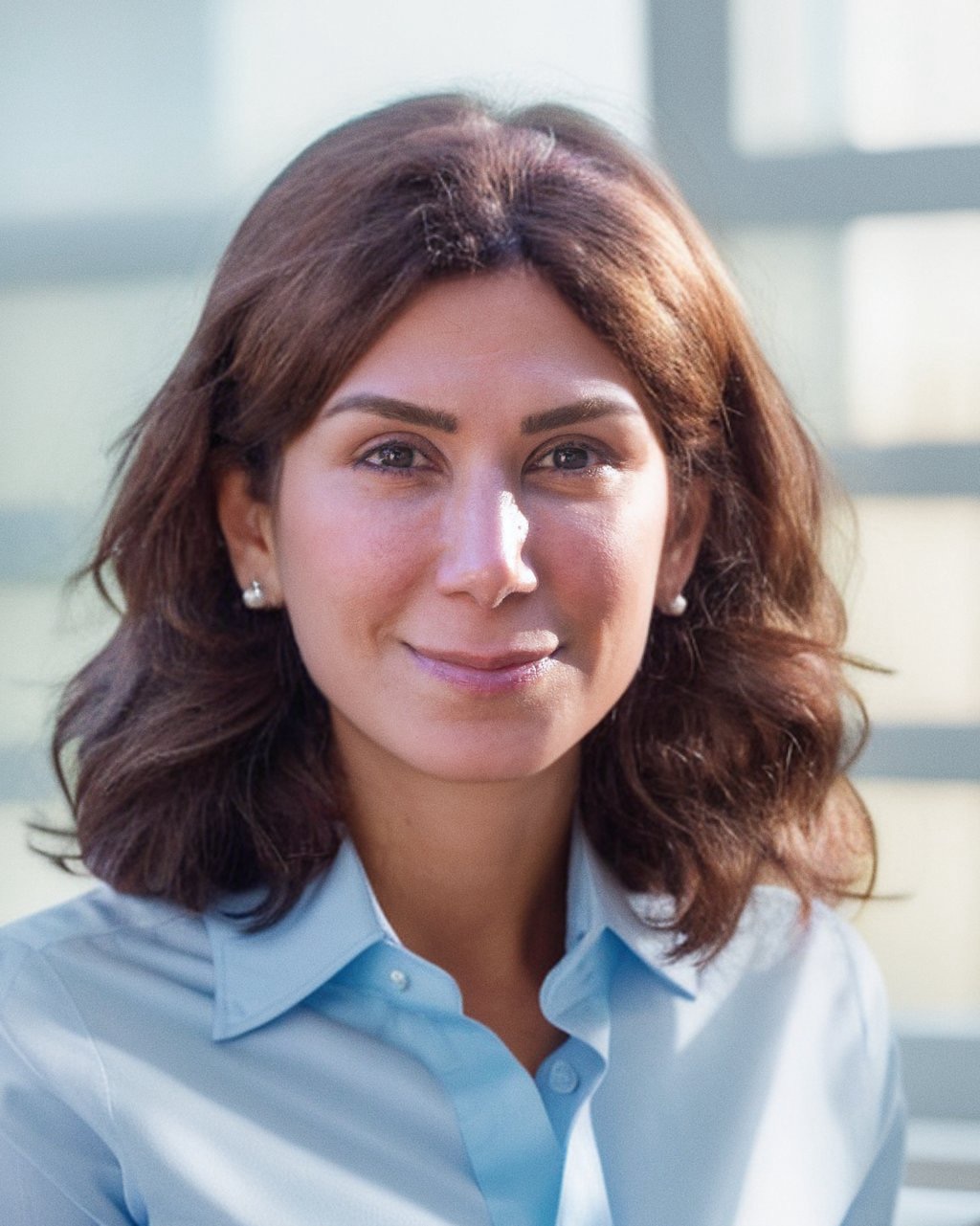
Dr. Shiva Abbaszadeh is an Associate Professor at the University of California, Santa Cruz (UCSC) in the Electrical and Computer Engineering Department. She received her PhD in Electrical and Computer Engineering at the University of Waterloo (Ontario, Canada) in 2014 and joined Stanford University as a postdoctoral Stanford Molecular Imaging Scholar. She established the Radiological Instrumentation Laboratory at the University of Illinois at Urbana-Champaign before joining UCSC. Dr. Abbaszadeh’s research focuses on detectors, data acquisition, and computational processing to improve image quality and noise reduction. Her projects have been funded by NIH, DOD, and DOE. She was named Fellow of the National Initiative by the Research Corporation for Science Advancement to advance bioimaging. She is the recipient of many awards such as the Waterloo Institute for Nanotechnology Fellowship, SPIE Optics and Photonics Award, Stanford’s Jump Start Award for Excellence in Research, Society of Nuclear Medicine and Medical Imaging Tracy Lynn Faber Memorial Award.
--------------------------------------------------
 Prof. Ramsey Badawi (University of California, Davis, USA)
Prof. Ramsey Badawi (University of California, Davis, USA)
Ramsey Badawi is Professor of Radiology at UC Davis Medical Center, where he serves as Chief of Nuclear Medicine and Vice-Chair for Research. He obtained his PhD in PET Physics at the University of London in 1998, specializing in data corrections for fully 3D PET. After a postdoctoral fellowship at the University of Washington, Seattle under the mentorship of Dr. Tom Lewellen, he joined the Dana Farber Cancer Institute in 2000, where he helped to set up their first clinical PET service. In 2004 he joined UC Davis. His interests are in the development of high resolution PET/CT scanners for extremity imaging in humans, ultra-high resolution scanners for animal imaging, re-configurable PET systems and total-body PET scanners. He is also interested in applications of advanced reconstruction methods for parametric imaging in humans.
Prof. Badawi’s Lab is currently developing a high-performance pre-clinical PET/MRI scanner and a re-usable toolkit for building application-specific PET scanners. His flagship project, in collaboration with Distinguished Professor Simon Cherry, is the development and application of the world’s first total-body PET scanner, EXPLORER. Dr. Badawi is using the EXPLORER scanner to improve current clinical practice and shed light on biological problems that could not previously be answered, such as how the organs of the body interact together to create a system.
--------------------------------------------------
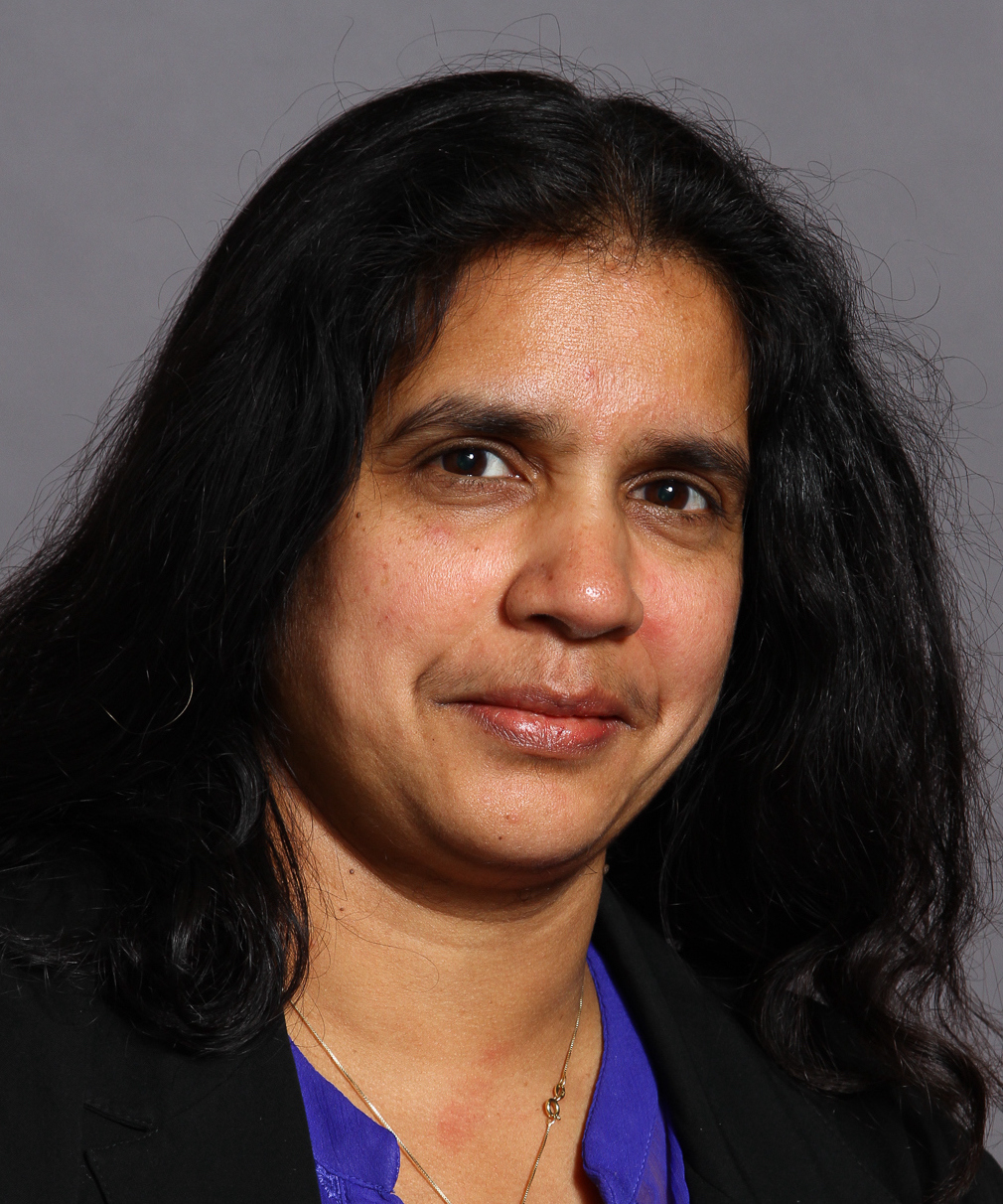 Prof. Damini Dey (Cedar Sinai, LA, USA)
Prof. Damini Dey (Cedar Sinai, LA, USA)
Damini Dey, PhD is a Professor and Research Scientist at the Departments of Biomedical Sciences and Medicine at Cedars Sinai Medical Center in Los Angeles, CA. Dr. Dey is the director of the Quantitative Image Analysis Program, co-associate director and technical co-director of PET-MR at the Biomedical Imaging Research Institute at Cedars Sinai Medical Center. She is a fellow of the American Institute for Medical and Biological Engineering and The American College of Cardiology. Dr. Dey received her doctorate in medical physics from the University of Calgary in Canada. Her expertise includes quantitative cardiac imaging and in cardiac CT and PET. Her research investigations include artificial intelligence-based analysis of cardiac images to predict and prevent heart attack, automated quantitative analysis and characterization of coronary plaque from coronary CT Angiography, automated quantitative measurement of epicardial and thoracic fat from cardiac CT, artificial intelligence in cardiovascular imaging and machine learning integration of imaging biomarkers towards precision medicine, and improvement of cardiac PET-MR imaging. She has received several research awards from the National Institute of Health and the Winnick Foundation.
-------------------------------------------------------
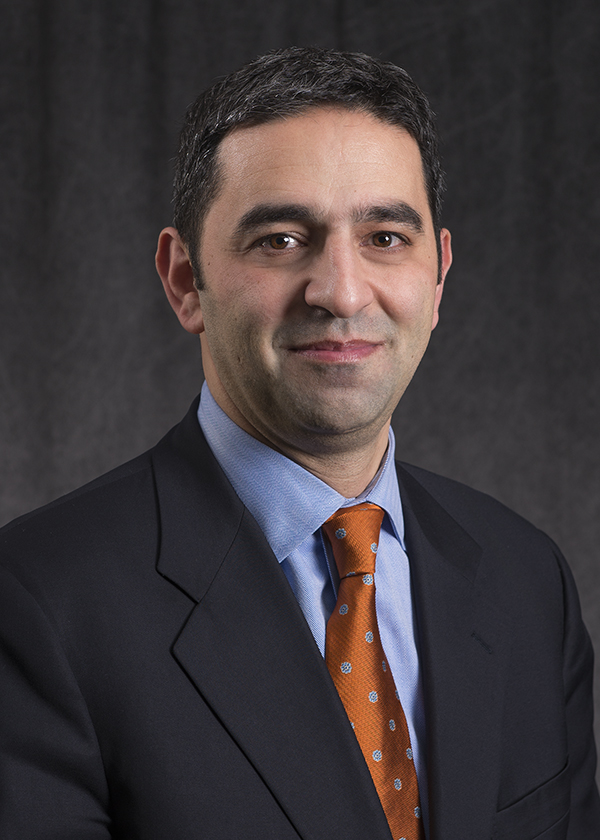 Prof. Georges El Fakhri (Director, Yale PET Center, Connecticut, United States)
Prof. Georges El Fakhri (Director, Yale PET Center, Connecticut, United States)
Dr El Fakhri is the Elizabeth Mears and House Jameson Professor of Radiology and Biomedical Imaging, and Professor of Bioinformatics and Data Sciences at Yale University School of Medicine and the Director of the Yale Biomedical Imaging Institute and Yale PET Center at Yale University. He is also serves as Vice Chair for Scientific Research. Prior to joining Yale he was the Nathaniel & Diana Alpert Professor of Radiology at Harvard Medical School and the founding Director of the Endowed Gordon Center for Medical Imaging at Massachusetts General Hospital and Harvard. Dr El Fakhri is an internationally recognized expert in quantitative molecular imaging (SPECT, PET-CT, and PET-MR) for in vivo assessment of patho-physiology in brain, cardiac and oncologic diseases. Current areas of research include high resolution PET/MR imaging in a range of diseases including neurodegenerative disease and traumatic brain injury (amyloid and neurofibrillary tangles), cardiac disease (mitochondrial membrane potential), as well as guiding radiotherapy planning (PET/MRSI). He has authored or co-authored over 300 papers and mentored over 100 students, post-docs and faculty. He has received many awards and honors, including the Mark Tetalman Award from the Society of Nuclear Medicine, the Dana Foundation Brain and Immuno-Imaging Award, the Howard Hughes Medical Institutes Training Innovation Award, The Hoffman Award, as well as significant funding from many NIH Institutes (e.g., NCI, NHLBI, NIA, NIBIB, NINDS, OD). He was elected Fellow to the American Association of Physicists in Medicine (AAPM), the Society of Nuclear Medicine and Molecular Imaging (SNMMI), the American Institute for Medical and Biomedical Engineering (AIMBE), The International Academy of Medical & Biological Engineering (IAMBE) and the IEEE for contributions to quantitative biological imaging.
--------------------------------------------------
 Prof. Hong Joo Kim (Kyungpook National University, South Korea)
Prof. Hong Joo Kim (Kyungpook National University, South Korea)
Prof. Hong Joo Kim received Ph.D. in Physics from KOREA University in 1989 major in experimental high energy physics. Since then, he worked on AMY, ZEUS, LSND, CREAM, ISS-CREAM, BELLE experiments and currently he is involved in AMoRE (Co-Spokesman) and COSINE experiment in deep underground, and leading the KAPAE experiment based on positronium annihilation. He is a professor of department of physics and a director of Center for High Energy Physics at Kyungpook National University. His major interest is scintillating materials development and application to high energy and nuclear physics, astrophysics as well as radiation detection and medical imaging.
--------------------------------------------------
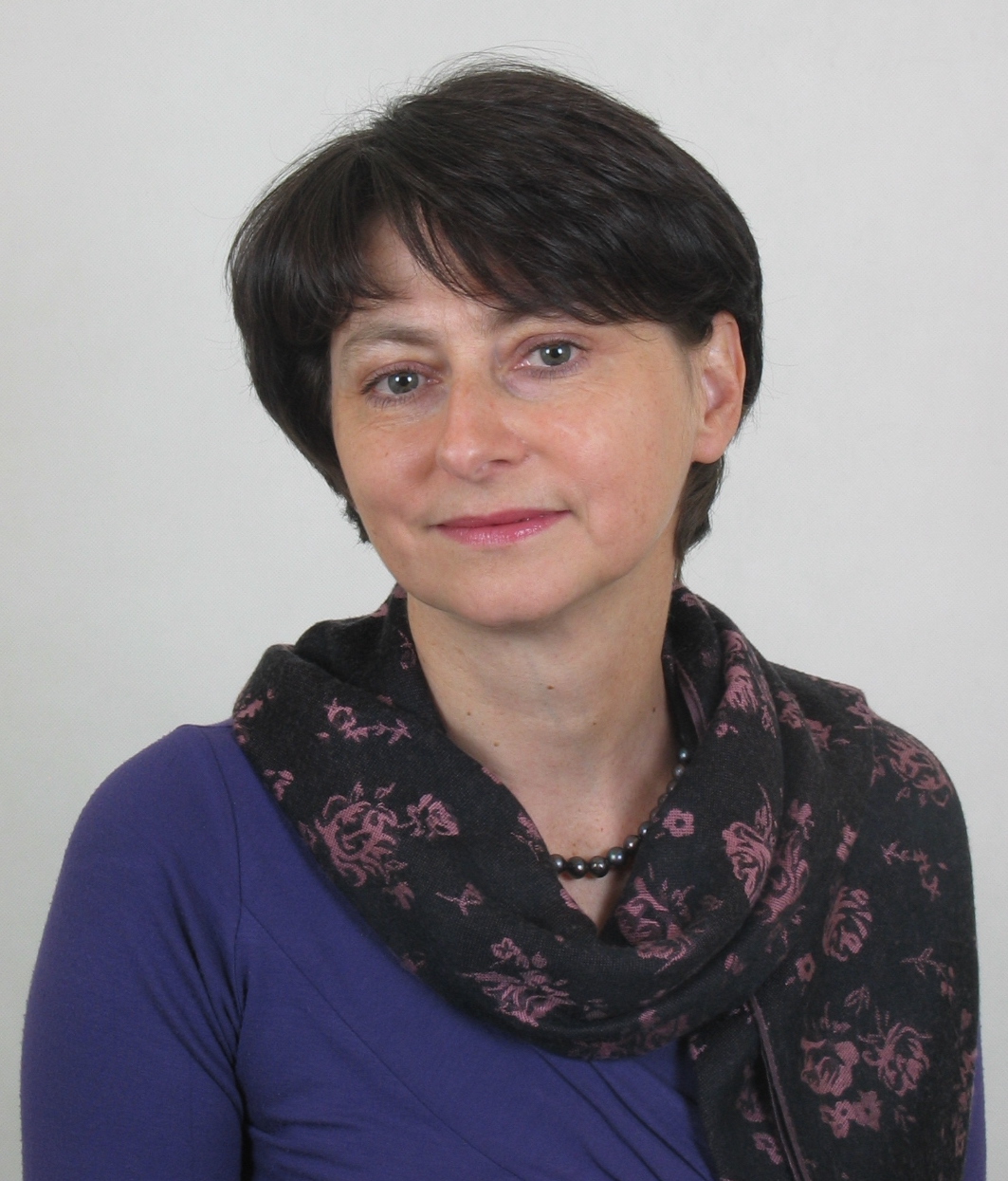
Alicja Hubalewska-Dydejczyk MD PhD, Professor of the Jagiellonian University, Medical College, Cracow, Poland. She is a head of the Chair and Department of Endocrinology, and is a specialist in endocrinology, internal medicine and nuclear medicine.
Professor Alicja Hubalewska-Dydejczyk is known in the Polish and international scientific community as one of the outstanding researchers and experts in the field of thyreology and endocrinology, as well as a specialist in nuclear medicine who has devoted part of her scientific work to optimising imaging and therapy of endocrine tumours with the use of novel radiolabelled compounds. From 2008 to 2010 she was the President of the International Research Group in Immuno-Scintigraphy and Therapy. Since 2017 she has been the National Coordinator of Poland in the Iodine Global Network. Currently, Prof Alicja Hubalewska-Dydejczyk is the President Elect of the Polish Society of Endocrinology. She is the author of 300 publications, 67 book chapters and many letters to the editor, commentaries and editorials.
Prof. Alicja Hubalewska-Dydejczyk is an experienced researcher. Since the beginning of her scientific way she has worked on the improvement of diagnostic and therapeutic approaches in patients with endocrine tumours with the use of new radiolabelled compounds, being a member of the outstanding scientific groups. Within this cooperation Prof Alicja Hubalewska-Dydejczyk coordinated two joint EU grants: “Phase I clinical trial using a novel CCK-2/gastrin receptor-localizing radiolabelled peptide probe for personalized diagnosis and therapy of patients with progressive or metastatic medullary thyroid carcinoma” - GRAN-T-MTC (TRANSCAN, FP7; 2013-2018) and “Novel 99mTc-labeled somatostatin receptor antagonists in the diagnostic algorithm of neuroendocrine neoplasms – a feasibility study” TECANT (ERA PerMed; 2018-2023; Horizon 2020). The effects of these studies were to demonstrate the safety and possibility of detecting primary and metastatic lesions of medullary thyroid cancer using the tested radiolabeled gastrin analogue (CP04), and to demonstrate the safety of a new compound – radiolabeled SSTR antagonist (TECANT1) and its better sensitivity in somatostatin receptors status assessment in neuroendocrine tumors in comparison to routinely used SSTR antagonist. Prof. Alicja Hubalewska-Dydejczyk also conducted pioneer research on the use of a GLP-1-labelled analogue in the detection of occult insulinoma. She is one of the main Editor of the book: Somatostatin analogues: from research to clinical practice. Hoboken, New Jersey: Jogn Wiley&Sons, [2015].
Prof. Alicja Hubalewska-Dydejczyk special interest also concerns diagnosis and treatment of pregnant women with thyroid diseases as well as other endocrine diseases in pregnancy. As a member of the Polish Council for Control of Iodine Deficiency Disorders she managed the National Programs for Elimination of Iodine Deficiency and is involved in the work on optimization the iodine prophylaxis in Europe. Suprarenal glands and pituitary disorders are an additional area of interest.
--------------------------------------------------
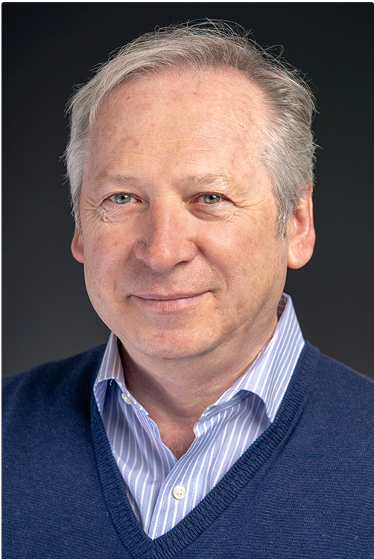 Prof. Karol Lang (University of Texas at Austin, USA)
Prof. Karol Lang (University of Texas at Austin, USA)
Karol Lang is the Jane and Roland Blumberg Professor of Physics at the University of Texas at Austin, where he teaches and conducts research in experimental particle physics and in nuclear medical imaging. He received his M.Sc. in Physics from the University of Warsaw, and his Ph.D. from the University of Rochester.
He has participated in experiments conducted at accelerators at Fermilab, SLAC, BNL, and CERN, and underground laboratories in Soudan, Modane and Gran Sasso. Currently, he is involved in the Fermilab program to study long baseline neutrino oscillations and in experiments designed to search for neutrinoless double beta decay. As a spinoff of these experimental programs, he is also involved in research to develop and employ high sensitivity positron emission tomography (PET) scanners for the in-beam image-guided proton therapy, elucidation of the FLASH effect, and the total body imaging.
--------------------------------------------------
 Prof. Craig Levin (Stanford University, USA)
Prof. Craig Levin (Stanford University, USA)
Dr. Craig S. Levin is a Professor of Radiology and, by Courtesy, of Physics, Electrical Engineering, and Bioengineering at Stanford University, U.S.A. He is a founding member of the Molecular Imaging Program at Stanford, and Principal Investigator and Director of the NIH-NCI funded T32 Stanford Molecular Imaging Scholars postdoctoral training program. He received his M.S., M.Phil, and Ph.D. degrees in Physics from Yale University. An internationally recognized researcher in the field of molecular imaging he has over 200 peer-reviewed publications and 40 patents awarded or pending. He directs a 20-member laboratory that explores new concepts in instrumentation and software algorithms for molecular imaging, introduces some of these new tools into clinical and pre-clinical imaging studies of cancer, heart disease and neurological disorders, and partners with industry to disseminate some of these technologies into products used for patient care throughout the world. To support his research, he has generated numerous grant awards as Principal Investigator from government, industry, and private institutions. He lectured in a Nobel symposium in 2007, and in 2012 was elected into the American Institute for Medical and Biological Engineering’s College of Fellows, and also in 2012 was given the U.S. Academy of Radiology Research Distinguished Investigator Recognition Award. In 2020 he received the Edward J. Hoffman Medical Imaging Scientist award from the IEEE Nuclear and Plasma Sciences Society, and in 2023 he received the Society of Nuclear Medicine and Molecular Imaging Mars Shot Award.
--------------------------------------------------
 Prof. Yasuyuki Nagashima (Tokyo University of Science, Japan)
Prof. Yasuyuki Nagashima (Tokyo University of Science, Japan)
Dr. Yasuyuki Nagashima is a professor in Department of Physics, Tokyo University of Science. He graduated from University of Tokyo in 1985, and after working as a research associate in College of Arts and Sciences, University of Tokyo, he became an associate professor at the Tokyo University of Science in 2003 and a professor in 2007. He is currently Dean of the Faculty of Science II, Tokyo University of Science.
He specializes in atomic physics involving positrons, in particular, the formation and behavior of positronium, the lightest neutral atom formed by electrons and positrons. In 2008, he discovered the high-efficient emission of positronium negative ions from alkali metal coated surfaces, which led to various studies of positronium negative ions. He and his young collaborators continue to work on photodetachment of positronium negative ions, generation of energy tunable positronium beams and many research projects using these beams. He has also discovered the desorption of atoms forming a solid as ions when a slow positron beam is injected into a solid, and is continuing research using this phenomenon.
------------------------------------------------------------
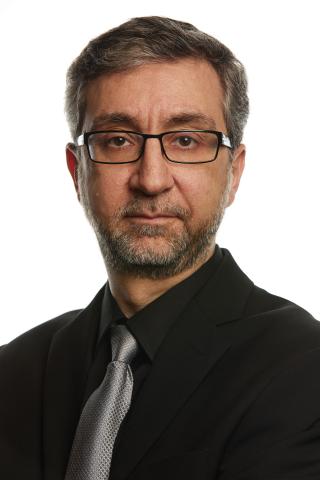 Prof. Sadek Nehmeh (Weill Cornell Medicine, Cornell University, New York)
Prof. Sadek Nehmeh (Weill Cornell Medicine, Cornell University, New York)
Dr. Sadek Nehmeh is Associate Professor of Medical Physics in Radiology and, Chief of PET & Nuclear Physics at Weill Cornell Medical College, New York, NY. Dr. Nehmeh received his PhD in particle physics from Wayne State University in 2000 where his work was part of the effort on the search for signatures for quark-gluon plasma as part of the Experiment E896 at Brookhaven National Lab. He then completed his training in medical physics at Memorial Sloan Kettering Cancer Center in the 2003. Dr. Nehmeh has been recognized for his very early work on respiratory motion correction in PET/CT. His current areas of research include the development of Ultra-High Performance Brain-dedicated PET, Monte Carlo simulations of cost-effective long axial field-of-view PET systems, and application-specific PET systems for noninvasive imaging of the arterial input function. Moreover, Dr. Nehmeh is leading major clinical effort on simultaneous multi-tracer PET imaging of glioblastoma, prostate cancer, and Alzheimer’s disease, as well as in PET imaging of the brain-heart axis. His previous clinical work included hypoxia imaging in head & neck and lung cancer, early detection of radiation-induced cardiac toxicity in cancer patients, and treatment response assessment in both cancer and neurology.
-----------------------------------------------------------
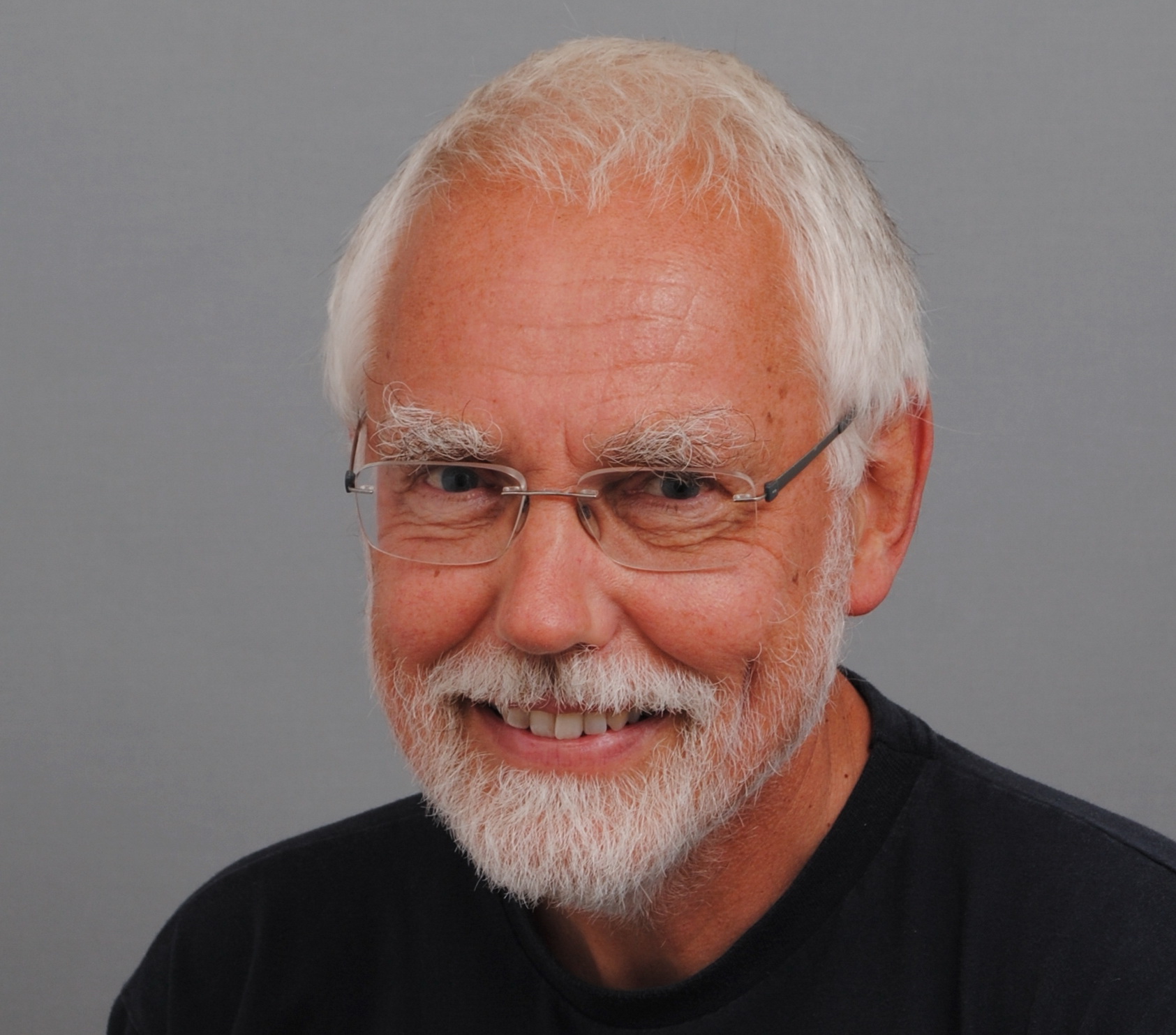 Prof. Rienk Nieuwland (Amsterdam University Medical Center, Nederlands)
Prof. Rienk Nieuwland (Amsterdam University Medical Center, Nederlands)
Rienk Nieuwland, biologist (PhD) chairs the “Amsterdam Vesicle Center” of the Amsterdam University Medical Center (www.vesiclecenter.com). We focus on isolation, detection, functional characterization (coagulation), and standardization of measurements on extracellular vesicles (EVs) in human body fluids for biomarker exploration. He coordinated European metrology projects METVES and METVES II aimed to standardize concentration measurements of EVs, chaired the Scientific Standardization Committee on Vascular Biology of the International Society on Thrombosis and Haemostasis (ISTH), co-chairs the Rigor and Standardization Committee of International Society on Extracellular Vesicles (ISEV), is executive board member and chairs the Educational Committee (ISEV), chairs the Blood EV task force (ISEV), is co-founder and member of the Extracellular Vesicle Flow Cytometry Working Group (www.evflowcytometry.org), and co-chairs a working group of ISEV and the European Liquid Biopsy Society (ELBS).
------------------------------------------------------------
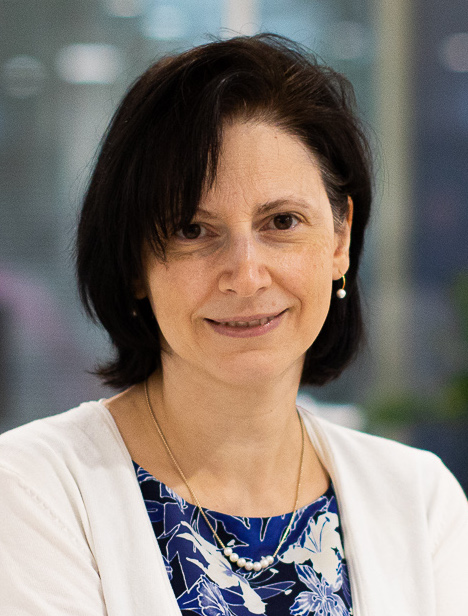 Prof. Katia Parodi (Ludwig Maximilian University of Munich, Germany)
Prof. Katia Parodi (Ludwig Maximilian University of Munich, Germany)
Dr. Katia Parodi received her Ph.D. in Physics from the University of Dresden, Germany, in 2004. She then worked as postdoctoral fellow at Massachusetts General Hospital and Harvard Medical School in Boston, USA. In 2006 she returned to Germany as tenured scientist and group leader at the Heidelberg Ion Therapy Center, obtaining in 2009 her Habilitation from the Heidelberg University. Since 2012 she is full professor and Chair of Medical Physics at the Physics Faculty of the Ludwig-Maximilians-Universität München in Munich, where she initiated a dedicated curriculum for Medical Physics within the MSc in Physics.
Her main interests are in high precision image-guided radiotherapy with focus on ions, from computational modeling to experimental developments of novel methods for imaging and in-vivo ion range monitoring for pre-clinical and clinical applications. For her work, Katia Parodi received national and international recognition, including the Behnken Berger Award in 2006, the IEEE Bruce Hasegawa Young Investigator Medical Imaging Science Award in 2009, the AAPM John S. Laughlin Young Scientist in 2015 and an ERC Consolidator grant in 2016. In 2017-2018 she served as president of the German Society for Medical Physics, and is since 2021 the Editor-in-Chief of the journal Physics in Medicine and Biology.
--------------------------------------------------
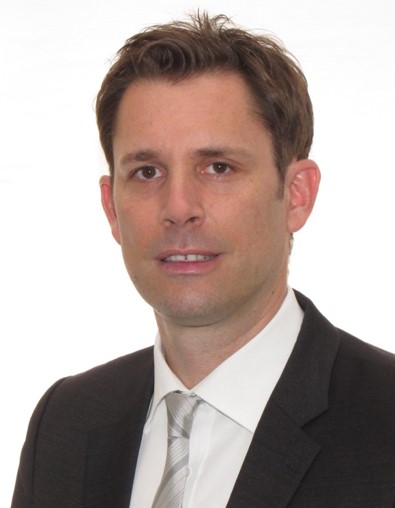 Prof. Axel Rominger (Bern University, Switzerland)
Prof. Axel Rominger (Bern University, Switzerland)
Axel Rominger, MD, is a Full Professor of Nuclear Medicine at the University Hospital in Bern, as well as Chairman of the Department of Nuclear Medicine at Inselspital. From 2007 until 2018 he worked at Ludwig Maximilian’s University of Munich, where he served as deputy director for 5 years. During this period he won several national and international research awards. His research interests focus on the constant improvement of PET imaging capabilities with emphasis in the neurological and oncological fields. To fully translate developments into clinical practice, he has established interdisciplinary research groups for artificial intelligence, biomedical engineering, and radiopharmaceutical research within the Department of Nuclear Medicine. In 2020, his department received the world's first large axial field-of-view PET scanner from Siemens, which provides new opportunities for research and clinics due to its high sensitivity, axial coverage, and fast time of flight performance. To accelerate research on total body PET imaging, he has established numerous international collaborations.
He serves as the principal investigator and co-principal investigator on several grants, both preclinically and clinically, in the fields of oncology and neuroscience, he is author of more than 300 peer-reviewed publications and he serves as associate editor of the EJNMMI journal.
--------------------------------------------------
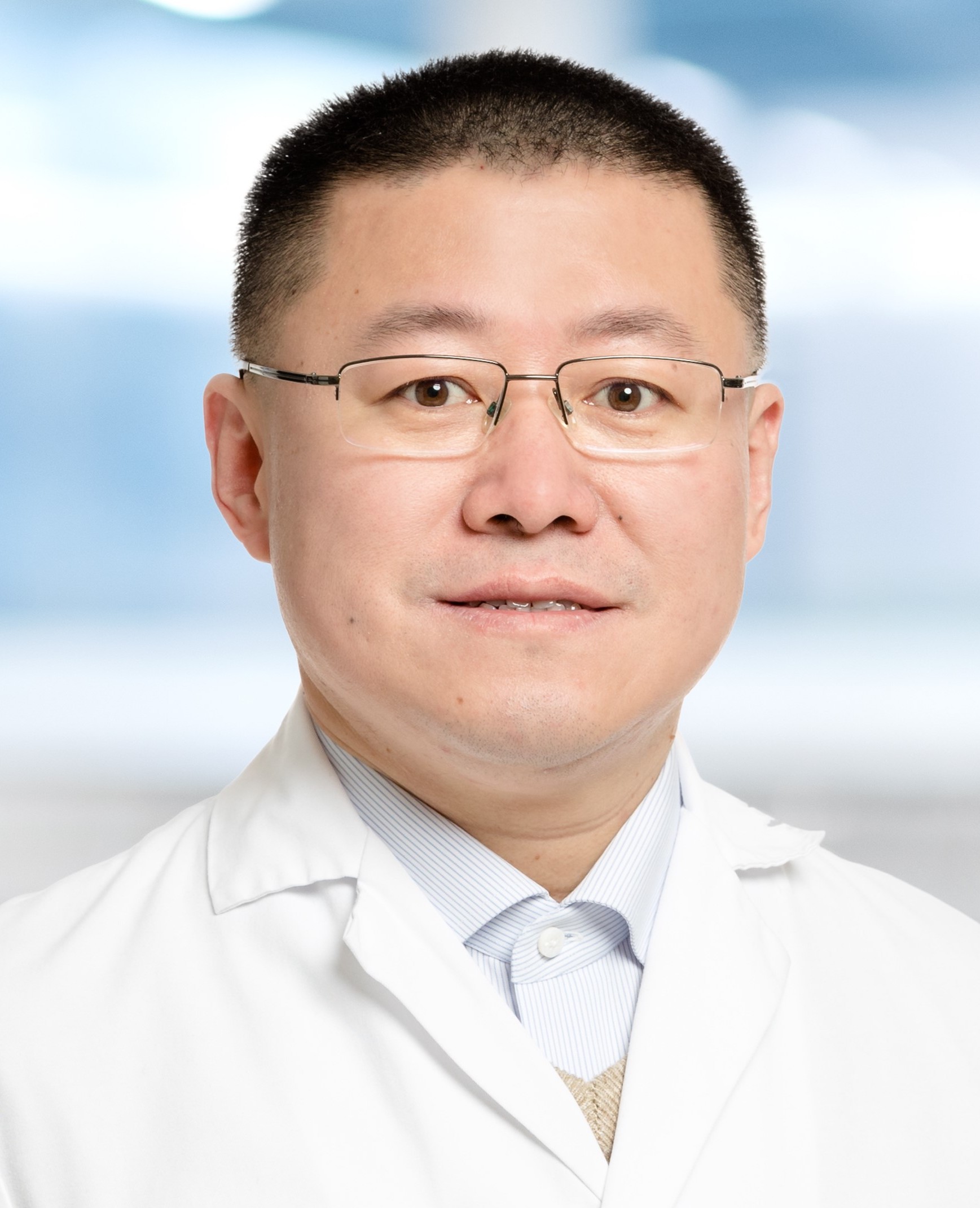 Prof. Kuangyu Shi (Bern University, Switzerland)
Prof. Kuangyu Shi (Bern University, Switzerland)
Prof. Kuangyu Shi is the Chief Medical Physicist and Head of the Lab for Artificial Intelligence and Translational Theranostics at the Department of Nuclear Medicine, University of Bern, Switzerland. Additionally, he is a senior lecturer at the Computer-aided Medical Procedure, School of Computation, Information & Technology at the Technical University of Munich, Germany. He did his Master and PhD at Max-Planck Institute for Informatics (2003-2008), Germany. Then he moved to Dept. Nuclear Medicine, Technical University of Munich for postdoctoral research and worked as subgroup leader from 2012 to 2018. On May 2018 he completed habilitation at Dept. Informatics, Technical University of Munich. His research is centered on advancing artificial intelligence and computational modeling techniques for nuclear medicine imaging and therapy, aiming to link the outcomes with underlying pathophysiological processes. Additionally, he is dedicated to developing both in vivo and ex vivo experimental methods, pushing the boundaries of microscopic nuclear imaging.
--------------------------------------------------

Prof. Dr. Greetje Vande Velde leads her lung and infectious diseases imaging research team at the Faculty of Medicine, KU Leuven, Belgium. She innovates small animal models and MRI, optical imaging and micro-computed tomography to study complex pathogenic processes, such as in lung diseases and during co-infections of viral and fungal pathogens: host response, dissemination, exacerbation.
--------------------------------------------------
 Prof. Piotr Widłak (Medical University of Gdańsk, Poland)
Prof. Piotr Widłak (Medical University of Gdańsk, Poland)
Prof. Piotr Widlak received M.Sc. in Molecular Biology (1988), Ph.D. in Biomedicine (1993), and habilitation in Biochemistry (2001), and also holds a titular (state) professorship in Medical Sciences (2007). He performed post-doctoral research at Karolinska Institute, Stockholm/Huddinge (1994-1995), and UT Southwestern Medical Center, Dallas (1996-1997). In 1997 he joined the faculty of the Maria Sklodowska-Curie National Research Institute of Oncology, Gliwice Branch, one of the largest clinical and medical research institutes in Poland. He was the Deputy Director for Research (2006-2015), and the Chairman of the Center for Translational Research and Molecular Biology of Cancer (2010-2021). In 2022 he joined staff of the Medical University of Gdańsk, a top medical school in Poland, as a Director of the Clinical Research Support Centre.
Dr. Widlak authored and co-authored about 200 peer-reviewed papers, with a number of citations exceeding 4,300. Major focus areas of his research have been molecular mechanisms involved in cellular responses to stress as well as applications of proteomics and metabolomics in molecular oncology. His recent interests include the role of extracellular vesicles in cancer.
--------------------------------------------------
 Prof. Taiga Yamaya (National Institutes for Quantum and Radiological Science and Technology (QST), Japan)
Prof. Taiga Yamaya (National Institutes for Quantum and Radiological Science and Technology (QST), Japan)
Taiga Yamaya, Ph. D, is a Group Leader of Imaging Physics Group at National Institutes for Quantum Science and Technology (QST, fomer NIRS) in Japan. His research interest is the development of next generation positron emission tomography (PET) systems. PET is a promising method to promote molecular imaging research as well as cancer diagnosis. However there are still large demands for higher resolution, higher sensitivity and lower cost. Therefore his research interests are studies on detectors, systems, image reconstruction algorithms and data corrections to improve image quality and quantity in nuclear medicine. In particular, based on the core technology of depth-of-interaction (DOI) measurement, new equipment concepts of the OpenPET for joint PET - therapy imaging, the helmet-type PET for high performance brain imaging and the Compton-PET for the realization of whole gamma imaging (WGI) and quantum PET (Q-PET) are under development.
--------------------------------------------------
list of keynote speakers at 4th Jagiellonian Symposium on Advances in Particle Physics and Medicine
